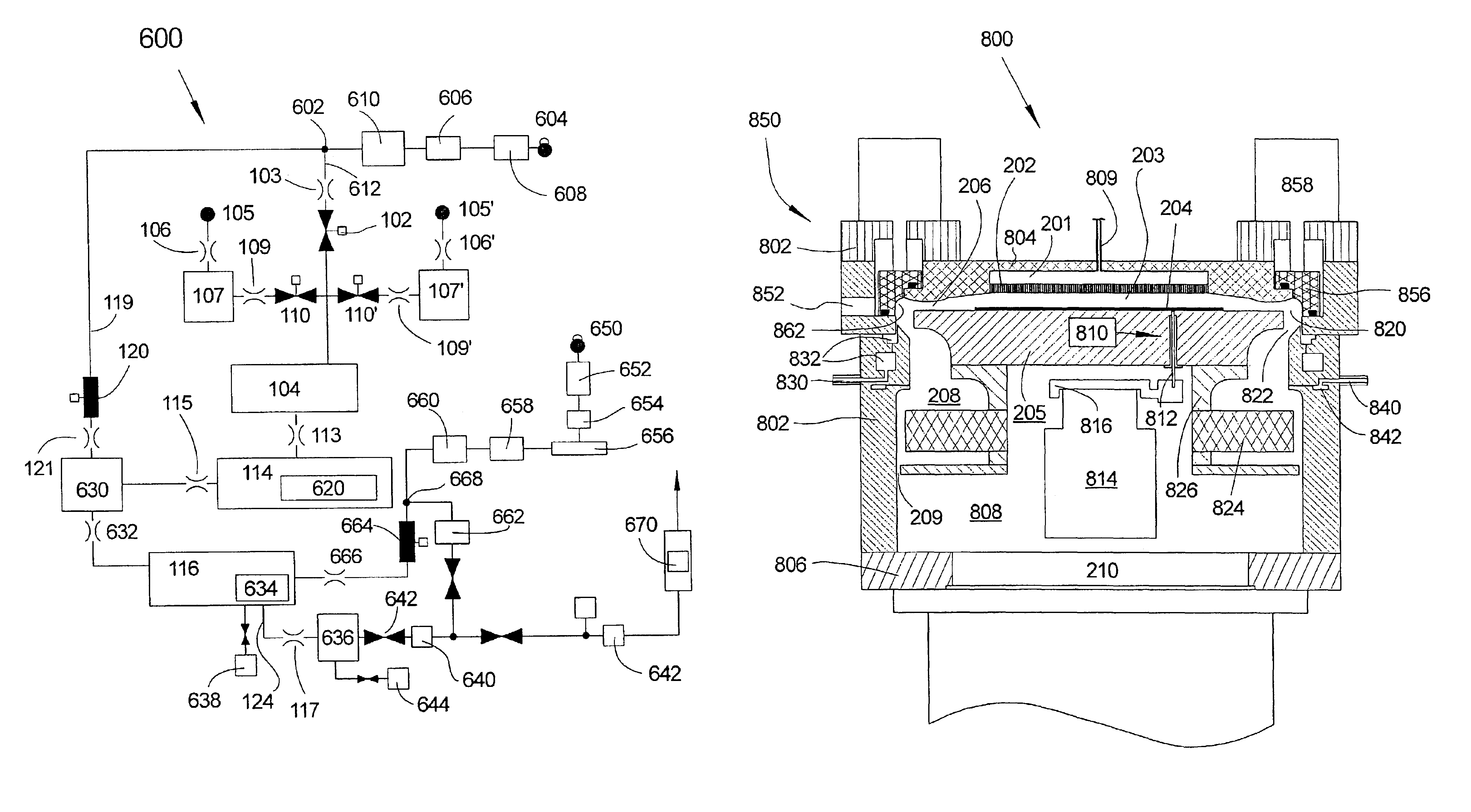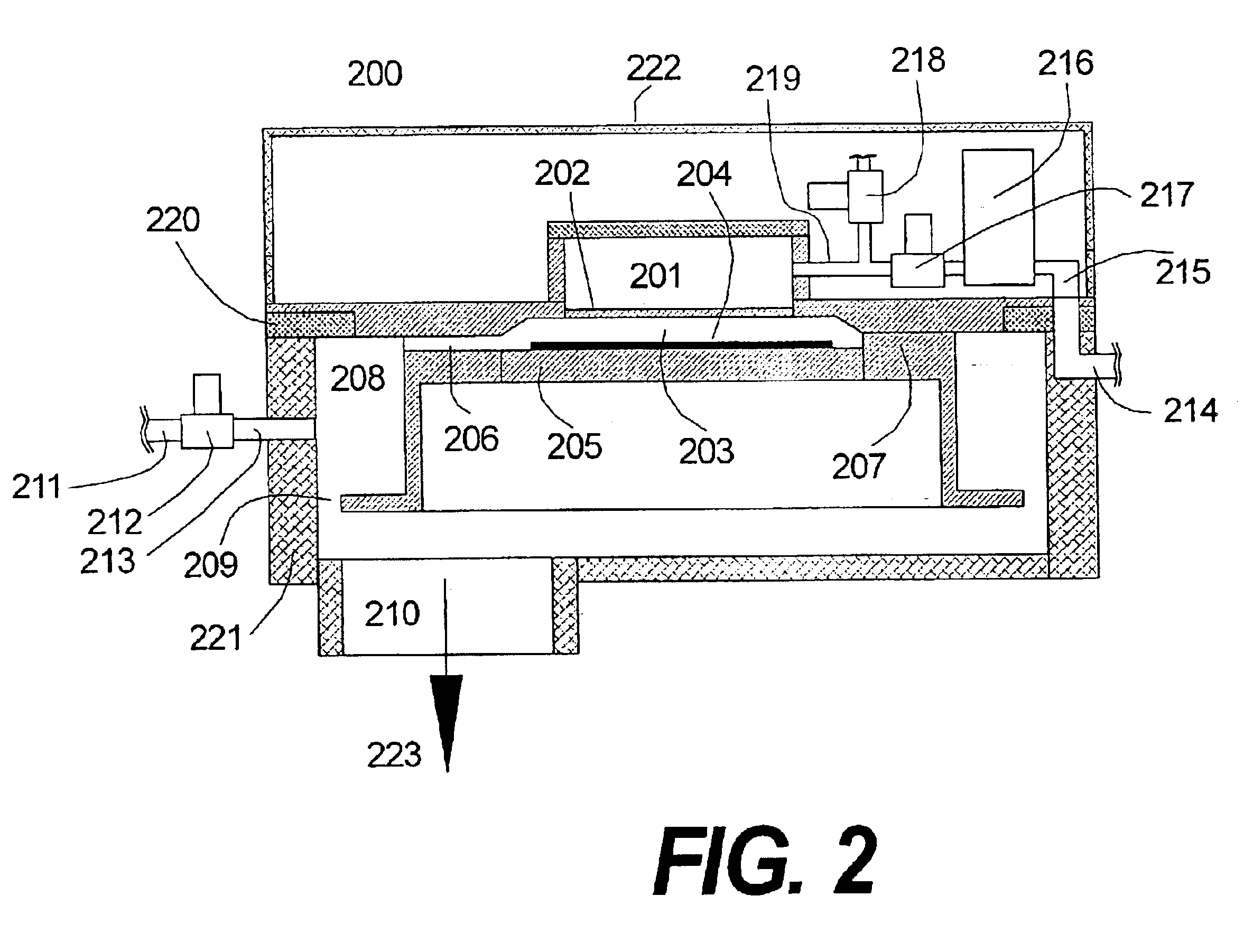ALD apparatus and method
a technology of ald apparatus and method, applied in the direction of chemical vapor deposition coating, transportation and packaging, coating, etc., can solve the problems of reducing throughput, preventing cost-effective implementation of ald systems and methods for manufacturing semiconductor devices and other devices, and cvd techniques that exceed the limits of conventional cvd techniques, etc., to achieve the effect of further improving throughput and material utilization
- Summary
- Abstract
- Description
- Claims
- Application Information
AI Technical Summary
Benefits of technology
Problems solved by technology
Method used
Image
Examples
example 1
[0171]An exemplary SMFD ALD system corresponding to system 600 of FIG. 12 was designed and constructed for conducting SMFD ALD in accordance with the invention to deposit Al2O3 using the reactant gases trimethylaluminum (“TMA”) and H2O. Descriptions of the various components, identified using reference numerals of FIG. 12, of the exemplary system are included in Table 2, below, in which appropriate physical design, dimensions, and functional characteristics are entered. Preferred values of process parameters set, measured, or calculated during operation of the exemplary system are listed in Table 3. Definitions and explanatory notes, listed below Table 3, are referenced in Tables 2 and 3 by numbers (1) through (11).
[0172]
TABLE 2Component Ref. No.DesignPreferred Value608 MFM (1)MKS0 sccm-2000 sccm606 Pressure controllerMKS 640A0 Torr-1000 Torr610 Gas preheat boxAluminum Container1500 cc103 FRELong Tube0.052 liter / sec (4)106 FRELong Tube0.030 liter / sec (5)106′ FRELong Tube0.010 liter / ...
PUM
| Property | Measurement | Unit |
|---|---|---|
| aspect ratios | aaaaa | aaaaa |
| thickness | aaaaa | aaaaa |
| pressure | aaaaa | aaaaa |
Abstract
Description
Claims
Application Information
 Login to View More
Login to View More - R&D
- Intellectual Property
- Life Sciences
- Materials
- Tech Scout
- Unparalleled Data Quality
- Higher Quality Content
- 60% Fewer Hallucinations
Browse by: Latest US Patents, China's latest patents, Technical Efficacy Thesaurus, Application Domain, Technology Topic, Popular Technical Reports.
© 2025 PatSnap. All rights reserved.Legal|Privacy policy|Modern Slavery Act Transparency Statement|Sitemap|About US| Contact US: help@patsnap.com



